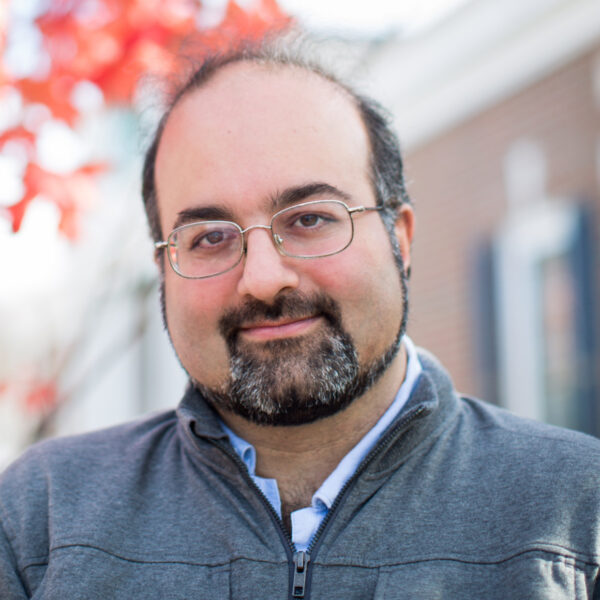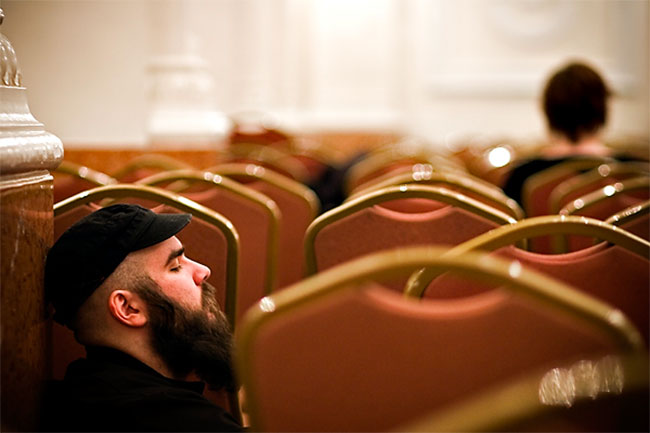What If We Prayed Inside the Ka’ba of the Heart?
A few days ago, a blog post went viral among Muslims.
It is a simple post, containing pictures from the rarely photographed inside of the Ka‘ba, the House of God in Mecca. The comments ranged from sheer awe to tears at finally seeing the inside of this much adored site, to bewilderment at a young man who is inside God’s temple, yet seems to be more absorbed in the conversation on his cellphone.
Why did this simple pictorial essay capture the imagination of so many, including me? And what secrets does the Ka‘ba’s inside hold?

It is towards the Ka‘ba that Muslims worldwide orient themselves for the daily prayers. The usual pictures of the Ka‘ba are familiar, elegant, comforting, “home.”
There is the Ka‘ba, the center, the heart. Mostly we see the façade of the Ka‘ba from majestic angles: The familiar cube is covered in an elegant black cloth, adorned by beautiful Qur’anic inscriptions.

There is something powerful in the symbolism of the pilgrimage of prayer towards the Ka‘ba: orientation towards God. We move from the periphery of our existence towards the center, from a state of scatteredness to that of unity and wholeness. We leave behind the sense of forgetfulness that characterizes so much of our busy lives, and come back to life, come back to prayer, come back to who we are called to be.
So in America and in China, in Turkey and in Switzerland, in South Africa and Pakistan, and all over the world, Muslims face Mecca at the time of prayer. We turn our faces, and with it, our hearts, back towards God.
We remember who we are by remembering who God is.
We recall Abraham, who along with his son Ishmael built the oldest temple for God. We meditate on the sacrifice that Abraham was asked to make. We walk in the footsteps of Hagar, the woman whose courage, faith, and perseverance Muslims embody in the Hajj pilgrimage. We remember Muhammad cleansing the temple, and restoring faith in the One God.

During the pilgrimage, we see millions of Muslims circumambulating the Ka‘ba. A beautiful circle is formed, moving round and round in adoration of God. It is a walk, a dance, a prayer rolled into one. Before long, the Ka‘ba is the still point that connects earth and heaven, and the whole rest of the world is caught up in an ecstatic whirling. Here is the stillness, the axis of the world, around which all dance, activity, motion takes place.
But I’m not content to stop the symbolism at that level. There is yet another question that comes to my heart: What if we were inside the Ka‘ba? Which way would we face? In which direction would we pray?
So long as we are “outside” the temple, we orient ourselves towards this ancient temple which bears the fragrance of Abraham and Muhammad. What if we were on the inside? Do we line up to the East? The West? North? South?

Or would we, finally, ultimately, let go of directions and directionality. Perhaps we would finally realize that God is not “here,” “there,” above, below, but simply all that there is.
What if we finally abandon looking for God, and simply be with God? To pray inside the Ka‘ba is for the fish to become aware that it’s been in an ocean all along. To pray inside the Ka ‘ba is to breathe the awareness that we are bodies swimming in spirit; that we are loved. To pray inside the Ka‘ba is to realize that we are, already, immersed in God. God encompasses us.
There is, at long last, no “outside” of God for us to be in. This is in fact what the Qur’an promises us: God encompasses us from the behind. We are tangled up with God, in God.
Even more amazing is this realization: within the Islamic tradition, we are told again and again that the Ka‘ba is made of clay (“gel” in Persian), but the ultimate Ka‘ba is the heart (“del” in Persian). The Ka‘ba of clay is lovely, but we have to learn to find God inside the Ka‘ba of the heart.
And how lovely to pray inside the Ka‘ba of the heart. No more turning, seeking, chasing, rejecting, or even “finding.” There is only being.
There is what the Qur’an promises:
“The East and the West belong to God. Whichsoever way you turn, there is the Face of God.”
How sweet: to not want anything from the one we love, only to be with the beloved.
How beautifully we hear the old Sufi story: An old woman was in despair, because her life was coming to an end. She had saved some money but not enough to make the trip to Mecca. The Sufi master lovingly glanced at her, held her hand, and had her walk with around his illuminated heart. He then told her to give the money to the poor, and consider her pilgrimage performed.

It’s always best to pray with a community. One doesn’t set out on a pilgrimage alone. How lovely to be praying inside the Ka ‘ba with friends whose heart sings to the same music. And how lovelier to be taken inside a luminous Ka‘ba of the heart.
My friend, beloved:
Can I pray inside your Ka‘ba?
Will you pray inside mine?I have, for years, cleansed it of all the idols
Making it worthy of You.
Dare we say it? That ultimately we have to find God not in a building, but inside our own selves, inside each other. Then the breath that goes into the heart is nothing but the Spirit of God.
For a breath or two, to have been inside this Ka‘ba of the heart, praying from the inside.
Breathe in God, breathe out God.
The one who adores is the One adored.
The lover is the beloved, is love itself.Bathed in light
Being with the one we love.

